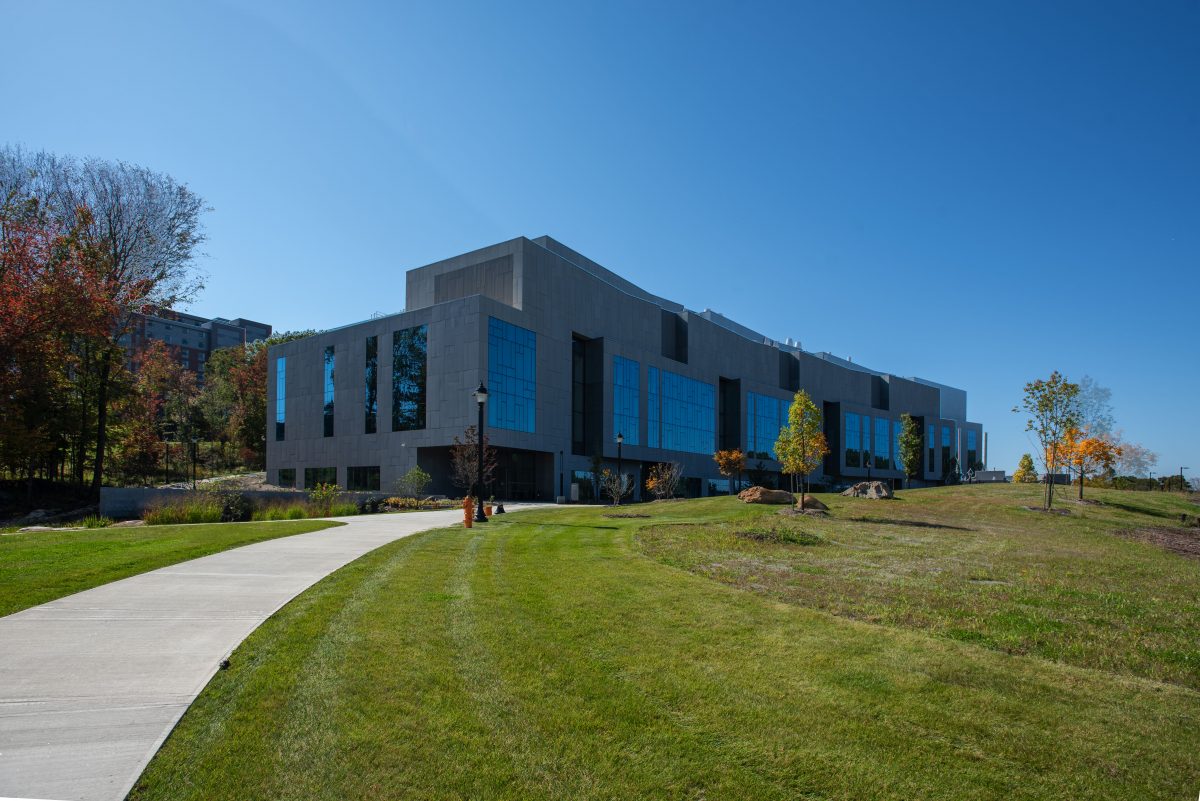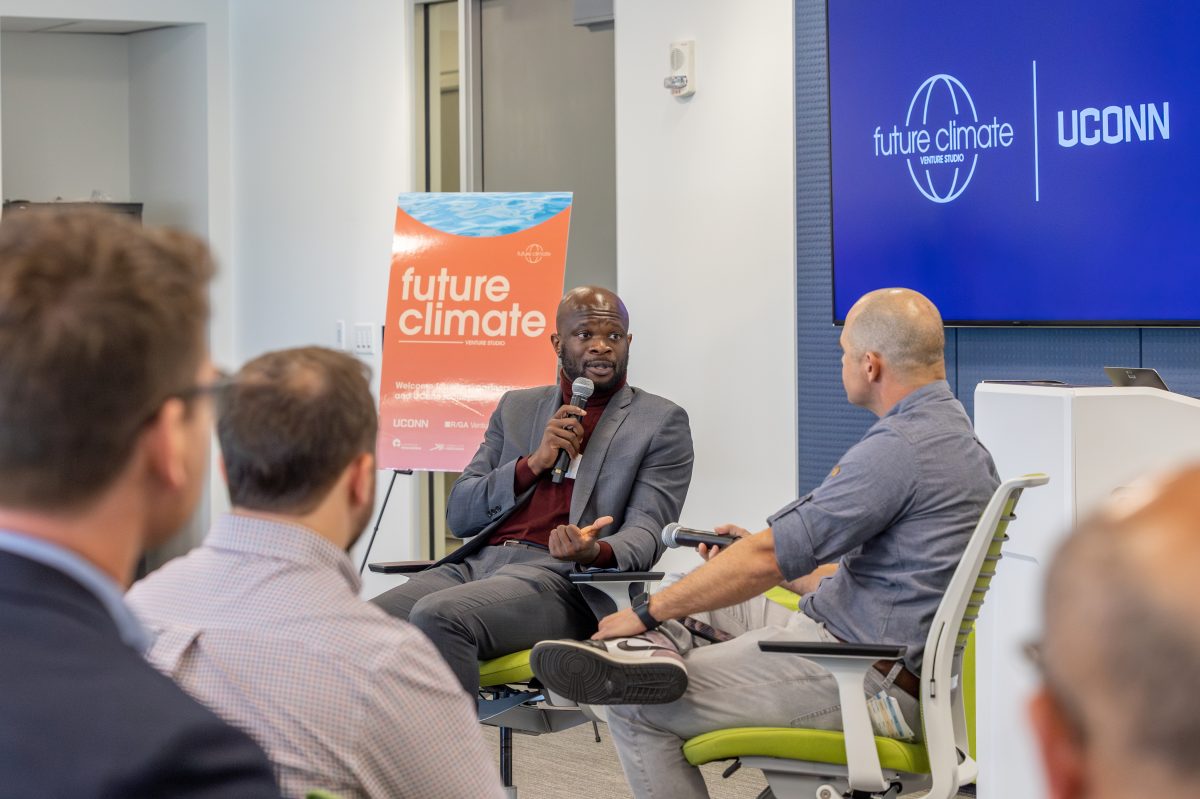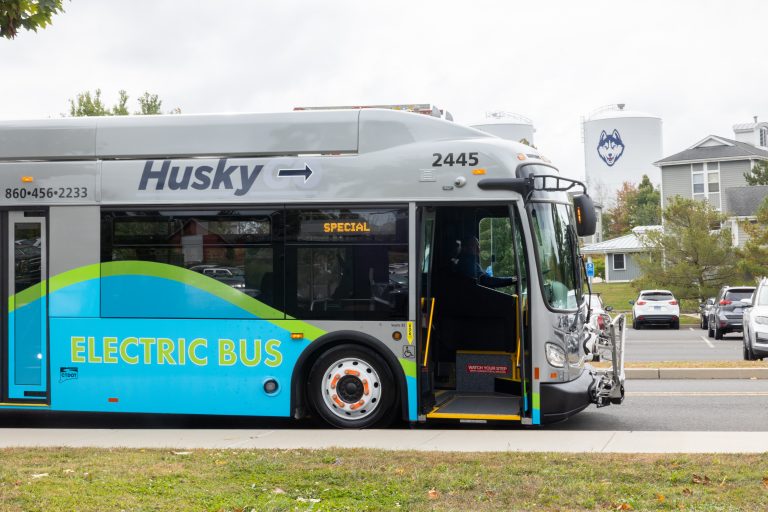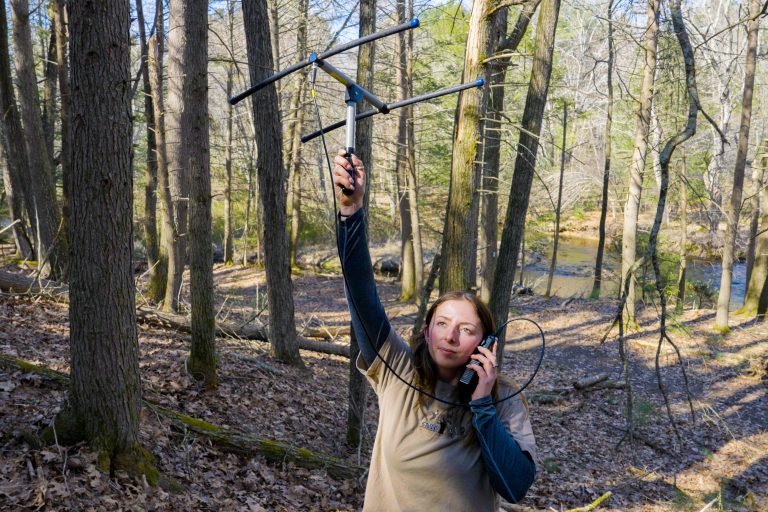Office of Sustainability
Building a Sustainable Campus and a Greener Future.


UConn Office of Sustainability
The UConn Office of Sustainability leads the way for campus sustainability efforts. We provide guidelines, direction and support for sustainability in all sectors, from infrastructure to student outreach, and create programs that enhance engagement and awareness around sustainable practices and behaviors at UConn and in the community.
Sustainability Guiding Documents
- 2020 Vision Plan for Campus Sustainability and Climate Leadership
- Sustainability Framework Plan
- 2019-2021 Sustainability Progress Report
- President's Working Group on Sustainability and the Environment Report: Transforming UConn to a Zero Carbon Campus: A Path Forward
- Active Transportation Plan
- UConn Aims to Achieve Carbon Neutrality by 2030
Sustainability News
-

Funded by a $500,000 NSF grant, the two-year initiative spearheaded by researchers at UConn-based Connecticut Institute for Resilience and Climate Adaptation (CIRCA) will ensure coastal communities have access to the expertise and tools needed to develop and implement strategies and policies that make them more resilient to the effects of extreme weather and climate change
- category: sustainability
- columns: 4
- pictures: true
- number-of-posts: 1
- read-more-text: Read More on UConn Today
- show-excerpt: false
- show-date: false
- safe-fetch: 1
- attempted-request: https://today.uconn.edu/wp-rest/wp/v2/posts?category-name=sustainability&posts_per_page=1&adjacent-posts=true&_embed
-

UConn is one of only two US universities in the Top 10
-

The fifth biannual Native Plants and Pollinators Conference brought together professionals and enthusiasts from across Connecticut
-

A new study aims to gain more knowledge about the fisher, a mysterious and nimble animal often mistaken for a cat, and understand why their population is in decline
- category: sustainability
- columns: 3
- offset: 1
- pictures: true
- number-of-posts: 3
- read-more-text: Read More on UConn Today
- show-excerpt: false
- show-date: false
- safe-fetch: 1
- attempted-request: https://today.uconn.edu/wp-rest/wp/v2/posts?category-name=sustainability&offset=1&posts_per_page=3&adjacent-posts=true&_embed
News from the Office of Sustainability
This story was written by two of our undergraduate student interns: Kate Larson and Emma Dutil
Have you ever read sustainability reports that rank universities on their environmental efforts? Have you heard of Green Metric or UConn’s EcoMadness competition? Did you ever wonder who is behind the data collection and statistics? Here at UConn, our students play a pivotal role in sustainability data collection.
The UConn Office of Sustainability is the leader of many sustainability initiatives on campus and offers a unique opportunity for students to involve themselves in university-wide sustainability data collection and tracking. Undergraduate students pursuing a variety of degrees take part in collecting and organizing sustainability metrics across UConn’s campus. We went out and talked to some of those students to find out what work they’ve done this fall and why it matters to the UConn community.
Claire Lawerence, a senior Sustainability Intern, spearheads the data collection for AASHE STARS and UI GreenMetric at the Office of Sustainability. She describes Green Metric as “a university-wide assessment of sustainability based on multiple avenues of campus. This includes Setting & Infrastructure, Energy & Climate Change, Waste, Water, Transportation, and Education & Research.”
When asked about her passion for data collection, Claire noted, “as a data analytics and public policy major, I am passionate about how data backs policy solutions. Without data analytics, we wouldn’t know where we are excelling, and where we need improvement.”
The Office of Sustainability also conducts EcoMadness each year, a month-long competition between UConn’s residence halls. Students in each hall compete to improve their recycling compliance and conserve the most energy and water. Sustainability data collected during the month is analyzed by Office of Sustainability interns, and after four weeks, the most sustainable residence hall wins the competition!
Sustainability Outreach Interns (SOI) collect the recycling compliance data for each of the residence halls. One intern, Anna Dinkel, described via email this process of auditing trash bins: “I look for contaminants, such as non-recyclables in the recycling or recyclables in the trash [and] I note what types of contaminants I see so that the Office of Sustainability can identify common mistakes residents are making.” To help her residence hall out, Dinkel shares that she has “created an approachable recycling guideline flyer that is posted in all of the trash rooms to reduce confusion about proper disposal.”
SOIs work hard to engage with residents and provide sustainability education in residence halls. Intern Maya Bullied said in an email, “it is encouraging when the data shows progress.” She emphasized that EcoMadness results provide a way to observe the direct impact of the Office of Sustainability’s efforts.
Kate Larson, a Sustainability Intern at the Office of Sustainability, takes part in analyzing the EcoMadness data collected each week by SOIs. When asked about this process, she shared: “It’s amazing to see data from all across the university come together; from this project I’ve learned a lot about how to analyze large amounts of data and share it in a digestible form.”
These examples highlight two of many data-driven sustainability initiatives that take place at UConn during the fall term. Whether it’s around campus or in the office, student interns at the Office of Sustainability help collect and analyze sustainability statistics, contributing to a larger process that helps quantify the university’s sustainability goals. If you’re interested in these opportunities and/or want to learn more about data collection at the university, visit the Office of Sustainability website!
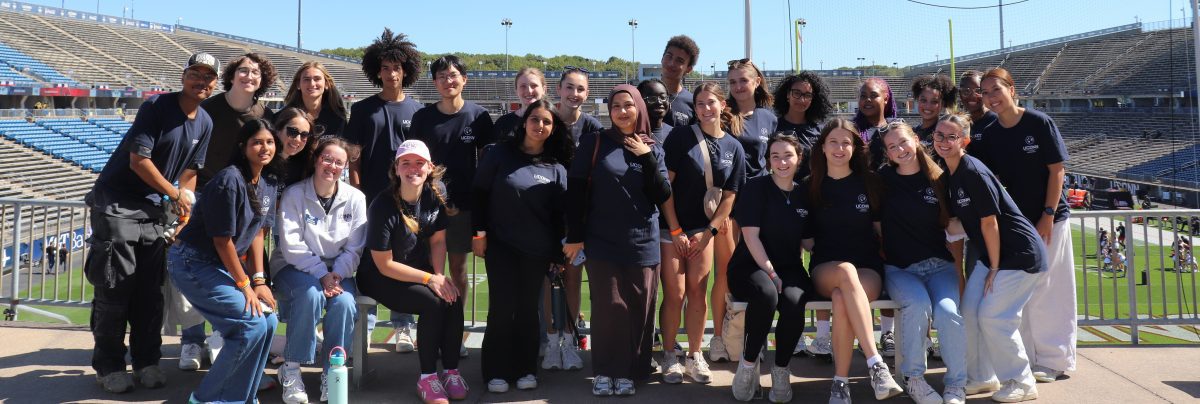
The second half of my time at COP went by much faster than expected, largely due to unforeseen circumstances but also because of my general familiarity with the venue. One of the largest aspects of this conference was networking, exercising communication skills, and maintaining professional relations. While in the Green Zone—the section of COP30 dedicated to interacting with civil society and businesses on climate-change action and showcasing developing solutions—I attended a COP and Coffee event hosted by Deloitte.
The global business management corporation held a morning discussion led by Dr. Freedom-Kai Philips, leader of the Global Deloitte Center for Sustainable Progress; Dr. Pradeep Philip, lead partner of Deloitte Access Economics; Maria Emilia Peres, Brazil Sustainability Leader; and Victoria Paz, finance lead of the Mangrove Breakthrough Hub. This discussion focused on funding sustainability efforts and effectively allocating finances to satisfy both investors and communities; financing mangrove agroforests was used as a prime example.
The conversation placed significant emphasis on collaborating with the private sector and navigating ways to receive or utilize funding, such as requesting business loans. Dr. Philips emphasized that it is critical to consider the way finance is deployed, what capital is put into, and how to ensure that the asset has “high integrity” in the eyes of insurers. While attending these discussions is essential to furthering my understanding of sustainable development, I find it equally important to engage in the discourse as well, and I held myself to a high standard of involvement as both a scholar and a delegate of UConn.
After the discussion, I reached out to Dr. Philips for follow-up on the measurement of “high integrity” environmental assets. He explained in depth how these resources benefit communities on the grounds of their permanence, additionality, and transparency in reporting.
Not only did this interaction provide valuable insight, but he also resonated with me and the other UConn COP students, and he was kind enough to provide us with a guided tour of the COP30 Blue Zone. I established connections and gained insight on many diverse fields and topics I likely would never have encountered otherwise. Although my Thursday and Friday explorations were unfortunately cut short due to the fire, I still made use of pre-established connections to further my COP experience. Earlier in the week, I had attended the Thailand Pavilion youth-led “Regeneration Generation” panel. Most of the students were from Washington University, and my engagement in their panel allowed me to follow up with an informative and engaging lunch discussion on Thursday.
All of these immersive opportunities and connections fueled my professional and academic growth in ways I never would have anticipated. COP30 provided me with invaluable opportunities, meaningful connections, and a deeper understanding of the global climate landscape—insight that will continue to shape my path as a student and a professional.
Toriana Grooms is a junior majoring in political science and English with a minor in German.
My final days at COP were filled with a lot of learning and cultural immersion. On Tuesday, I attended a “COP and Coffee Chat” at the Deloitte pavilion in the Green Zone. After the talk, I introduced myself to Dr. Freedom-Kai Phillips, the Director of the Deloitte Center for Sustainable Progress. I was impressed by his expertise and approached him after this talk to learn more about his professional journey. Dr. Phillips greeted my classmates, and I with immense kindness and openness. He invited us to meet with him in the Blue Zone the following day for a longer discussion on COP.
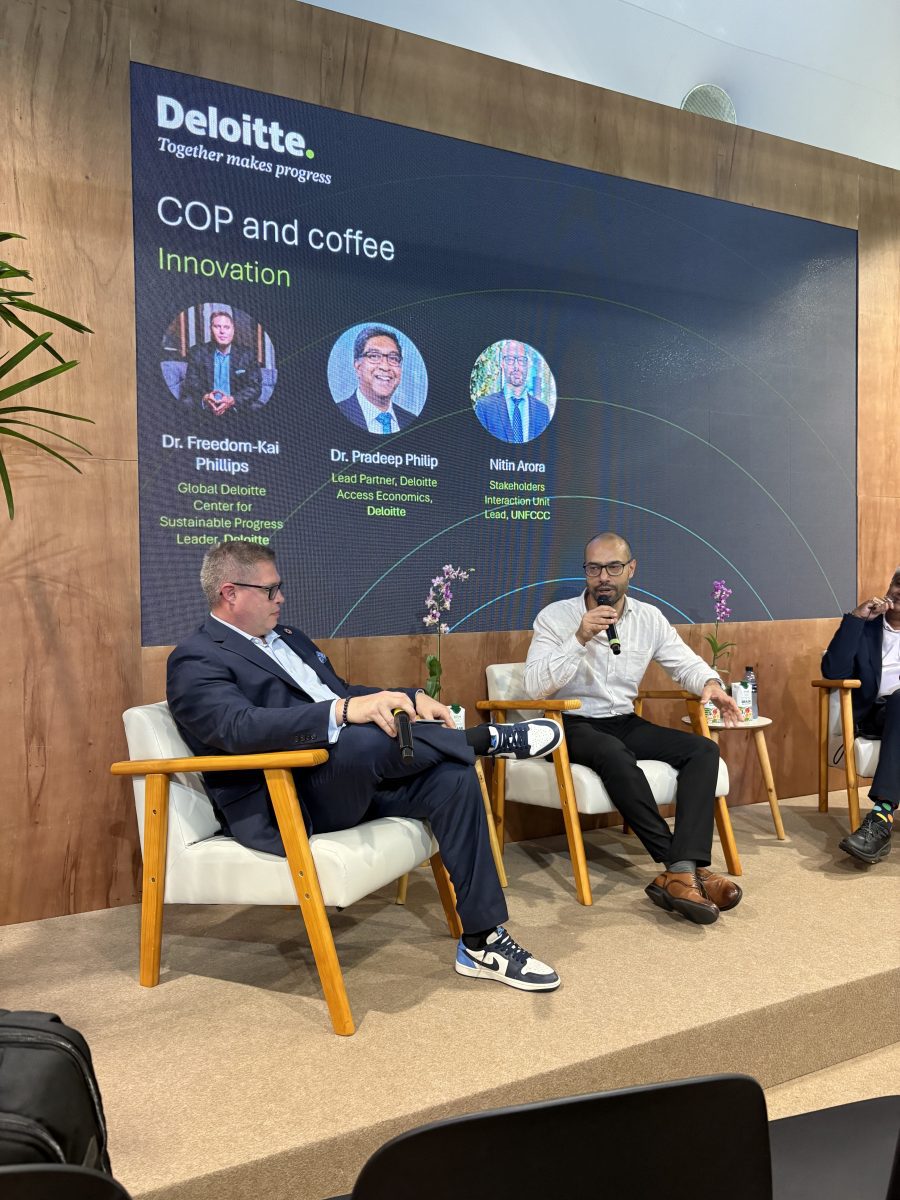 On Wednesday, we met with Dr. Phillips and were provided with an experience that I will forever appreciate. Dr. Phillips walked us around the Blue Zone Pavilions, introducing us to his colleagues and friends who work at different climate organizations. He gave us a proper lay of the land and made COP feel smaller and manageable. We met leaders working in the Ocean, Digital Innovation, and World Green Economy Pavilions. We got the exclusive opportunity to talk with a secretariat at the United Nations, in the restricted section of the Blue Zone. This experience framed my perspective for the last two days I spent at COP. It reaffirmed the idea that everything is about the connections you have with individuals in and outside of your field. As we parted, Dr. Phillips reminded us that, in 10 years when we are growing professionals in our respective fields, we need to share our experiences like he did.
On Wednesday, we met with Dr. Phillips and were provided with an experience that I will forever appreciate. Dr. Phillips walked us around the Blue Zone Pavilions, introducing us to his colleagues and friends who work at different climate organizations. He gave us a proper lay of the land and made COP feel smaller and manageable. We met leaders working in the Ocean, Digital Innovation, and World Green Economy Pavilions. We got the exclusive opportunity to talk with a secretariat at the United Nations, in the restricted section of the Blue Zone. This experience framed my perspective for the last two days I spent at COP. It reaffirmed the idea that everything is about the connections you have with individuals in and outside of your field. As we parted, Dr. Phillips reminded us that, in 10 years when we are growing professionals in our respective fields, we need to share our experiences like he did.
Unfortunately, my time in the Blue Zone was cut short on Thursday due to a Pavilion fire, but my classmates and I embraced the disruption as an opportunity for culture immersion in Belém. We visited the Museum of the Amazons, where I learned about the rich and historical culture of the Amazon Rainforest’s Native tribes. The exhibit emphasized the threat that climate change poses to the livelihood of Indigenous Groups. We also visited the Mangal das Garças, which is a bird sanctuary with free admittance. The predominant bird species there are cranes, who are free to come and go as they please.
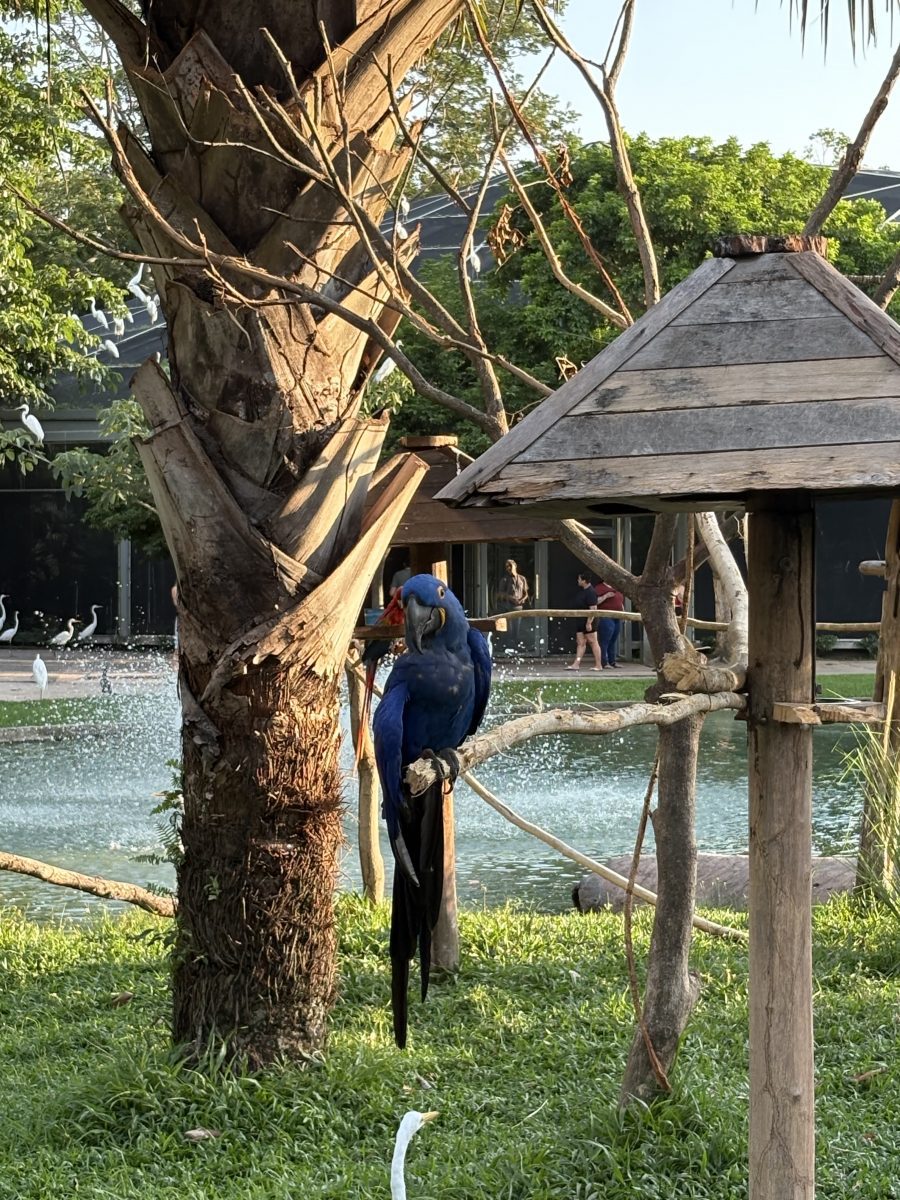
Although hearing about all the amazing things that organizations are doing to mitigate and adapt to climate change during my tour with Dr. Phillips and my explorations in Belém filled me with hope; I was still disappointed by some of the outcomes of COP. In the concluding agreement, countries that profit greatly from petroleum production and largely polluting states, removed language that provided a roadmap away from fossil fuels.
It is great to learn about all these organizations doing amazing work, but if the majorly polluting countries do not care and refuse to make concrete actionable plans away from the use of fossil fuels, will the climate crisis ever be solved? If the United States does not re-join the Paris Agreement, will countries that typically follow suit ever support the sustainable energy transition? There are so many questions that I was left with after concluding my time at COP30. Although the final agreements left me questioning the avenues forward, the hope given to me by the local and professional organizations that challenged these dominating countries remained.
Madelyn Kelly is a senior environmental engineering student.
Overall, COP30 and my time in Brazil served as a transformative experience that will continue to influence my life in the years to come. Since my first blog post, the last three days of COP have been extremely unique opportunities to learn from people around the world.
On Wednesday, I started the day by attending a talk titled “No Green without Blue,” which focused on how the connection between the Oceans and the Amazon Forest influences climate change. From this talk, I was able to learn from experts in the field from Brazil’s government and universities about how a healthy ocean is necessary to preserve both marine and land ecosystems. After this talk, I was able to meet up with some of my COP fellows to take a guided tour through the Blue Zone by a member of a delegation they had met the previous day. This was one of my most rewarding experiences at COP, as I was brought to pavilions that I had not yet visited and learned more about their goals and perspectives on the climate crisis. From this tour, I learned more about how technology is being used to address the climate crisis and more about the growing focus from the COP process on protecting our oceans. I finished on Wednesday by attending a talk put on by the UK Government addressing scalable investment for sustainable agriculture. At this talk, I heard from the UK Government’s Minister for Nature, Mary Creagh, about the nation’s partnership with Brazil in the RAIZ initiative, aimed at restoring degraded agricultural lands around the world.
 On Thursday, I was able to attend a talk that I had been looking forward to attending all week, put on by the International Bar Association that addressed how lawyers and law firms can advance climate mitigation and adaptation through pro bono work and beyond. While it is no secret that there are lawyers out there fighting for the environment, I find it extremely important that all lawyers, no matter what their practice, are conscious of the effects their work has on our natural world. I found this talk so interesting because it stressed the importance of that idea, and the speakers provided actionable steps to help achieve those goals. For instance, the speakers emphasized providing non-governmental organizations and civil society groups that protect vulnerable groups and mitigate climate change with free or reduced-cost legal services. I will surely take back what I learned from this talk and apply it to my future career as an attorney.
On Thursday, I was able to attend a talk that I had been looking forward to attending all week, put on by the International Bar Association that addressed how lawyers and law firms can advance climate mitigation and adaptation through pro bono work and beyond. While it is no secret that there are lawyers out there fighting for the environment, I find it extremely important that all lawyers, no matter what their practice, are conscious of the effects their work has on our natural world. I found this talk so interesting because it stressed the importance of that idea, and the speakers provided actionable steps to help achieve those goals. For instance, the speakers emphasized providing non-governmental organizations and civil society groups that protect vulnerable groups and mitigate climate change with free or reduced-cost legal services. I will surely take back what I learned from this talk and apply it to my future career as an attorney.
Lastly, on Friday, we decided to explore the city of Belém more. We visited the Mangal das Garças Ecological Park and the Museu das Amazônias. At the Museu das Amazônias, we were able to see the work of the late Sebastião Salgado, a renowned Brazilian photographer, whose work showcased life and nature throughout the Amazon region. At the Mangal das Garças, we were able to see local wildlife and the sunset on our last night in Brazil. My time at COP and in Brazil was extremely well spent, and I cannot wait to follow the negotiations at the next COP in Turkey and visit Brazil again.
Brett Hurley is a second year law student.
Donate to the UConn Office of Sustainability
Give support to programs and initiatives that contributing to UConn’s international reputation as a leader in university sustainability.

